ASIAN CARP: Bighead carp (Hypophthalmichthys nobilis), Silver carp (Hypophthalmichthys molitrix), Grass carp (Ctenopharyngodon idella), Black carp (Mylopharyngodon piceus)
FOUND IN B.C.? No.
CURRENTLY KNOWN IN: Established populations throughout the US, in the Mississippi river basin and Illinois Waterway.
Asian carp collectively refers to four species: Bighead carp, Silver carp, Grass carp, and Black carp. These invasive fish are members of the minnow family and can grow to large sizes and have damaging environmental, recreational, and economic impacts.
Identification
Asian carp are similar in appearance to native sucker species and non-native Common carp. Suckers that are native to BC have a downwards facing mouth with a cleft between their lower lips, which have folds and bumps on them. The differentiating features of Common carp are a long dorsal fin with a serrated edge, and a pair of barbels (whisker-like extensions) at their mouth. The chart below is helpful in identifying some key features that differentiate one type of Asian carp from another.
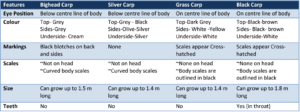
Figure 1: Chart displaying differentiating features of Asian carp
Bighead carp typically weigh around 40 pounds, but can grow to be heavier than 80 pounds. They have a protruding jaw, large head and mouth, and long closely spaced gill rakers (bone or cartilage that help with feeding).
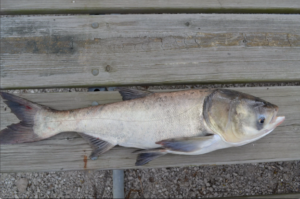
Figure 2: Bighead carp. Photo credit: https://www.asiancarp.ca/asian-carps/bighead-carp/
Silver carp are smaller, usually weighing around 20 pounds. However, they have the potential to reach 80 pounds under the right conditions. They have an upturned lower jaw, large broad head, and fused gill rakers. Bighead and silver carp travel in schools of large numbers, and are known to cross breed with each other and produce a hybrid species that is capable of reproducing.
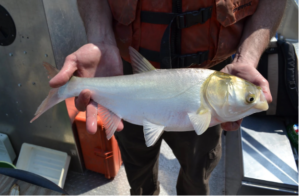
Figure 3: Silver carp. Photo credit: https://www.asiancarp.ca/asian-carps/silver-carp/
Grass carp typically weigh around 65 pounds, but again have the potential to reach 80 pounds. They have an oblong shaped body and a flattened head, and a cross hatched appearance due to their overlapping scales.

Figure 4: Grass carp. Photo credit: https://www.asiancarp.ca/asian-carps/grass-carp/
Black carp weigh between 30-150 pounds. They are more cylindrically shaped, with a compressed body shape and pointed head. They have a small mouth and their large overlapping scales give them a cross hatched appearance.

Figure 5: Black carp. Photo credit: https://www.asiancarp.ca/asian-carps/black-carp/
Life Cycle
Asian carp prefer spawning areas with consistent water flow to help eggs develop. Typically these areas are large rivers with moderate currents. All Asian carp can grow and reproduce very quickly, which helps them establish in new areas. Grass carp eggs and larvae develop best in water that is about 18℃. Black carps have a lifetime of 15 years, Bighead 16 or more years, Grass 5-11 years, and Silver 15-20 years.
Ecology
Asian carp are capable of tolerating a wide range of water quality, current speeds, and temperatures in freshwater environments. The hardiness and adaptability of these fish would allow them to establish quickly in new habitats in BC if they were introduced. All these fish consume large amounts of food sources, outcompeting native species and negatively affecting the ecology and food web of the environment they are introduced into. Bighead carp feed on a range of zooplankton, detritus, and invertebrates. Silver carp have a diet of mainly phytoplankton, which they strain from the water using their specialized gill rakers. Both Bighead and Silver carp do not have a true stomach, requiring them to constantly feed and consume large amounts of food resources. Grass carp will eat detritus, small fish, insects, and invertebrates, but prefer to consume aquatic vegetation. They can eat up to 40 percent of their body weight in a day. Black carp feed on zooplankton, detritus, and insect larvae when they are juvenile, and later use their throat teeth to feed on mollusks, shrimp, crawfish, and insects.
Introduction and Spread
Asian carp are native to drainages in China, Russia, and Northern Vietnam. They were introduced to the US in the 1960s and 70s to be used as biological control agents in aquaculture. Flooding allowed for Bighead, Silver, and Black carps to escape facilities and begin establishing populations in the Mississippi river. The spread of Grass carp is due to escape, following them being stocked to control aquatic vegetation. All species of Asian carp are in the live aquarium trade, making them susceptible to being released in BC. Once introduced to an ecosystem, Asian carp can quickly travel and reproduce.
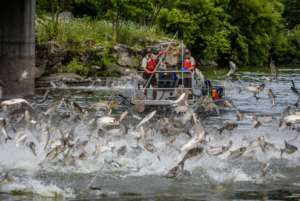
Figure 6: Silver carp jumping from the water. Photo credit: https://www.asiancarp.ca/asian-carps/silver-carp/
Impacts
Asian carp have negative ecologic and economic impacts in the environments they invade. Through their large consumption of food resources they outcompete native species, alter habitat, threaten biodiversity, and disrupt food webs.
Bighead and Silver carp consume large amounts of plankton, taking away resources from native species that also depend on this food source. If introduced to BC, Bighead and Silver carp could outcompete with Alewife, Bloater, Cisco, and Rainbow Smelt. The feeding habits of these two carp species allow for toxic algal blooms, causing more sunlight to penetrate the water and alter natural environmental conditions. The vibration and noise from boat propellers causes Silver carp to jump up to three metres out of the water, causing injuries to boaters and recreational users.
Grass carp significantly alter habitats by removing large amounts of vegetation. These fish can only digest about half of the plants they consume, expelling the remainder into the water, enriching it with nutrients and producing algal blooms and murky water conditions. Grass carp pose a threat to vital wetland ecosystems by consuming near shore vegetation. This impacts water quality, as surface runoff is increased and contaminants are no longer filtered out before reaching water bodies.
Black carp impact mussel and snail populations, by eating up to 20,000 pounds of food resources over the course of its life. Unfortunately Black carp do not prey on invasive Zebra and Quagga mussels. The feeding habits of Black carp could impact fish, turtles, birds, otters, and other native populations.
What Can We Do?
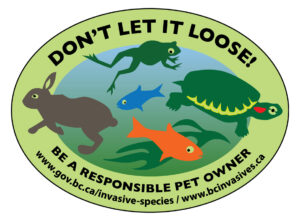
To prevent the spread of these invasive fish to BC, do not possess, breed, ship, or release them. Do not use live fish as bait, Asian carp have the potential to be spread in bait buckets as they look like minnows. Never release your aquarium pets or plants into the wild, as they have the potential to become invasive. Report sightings of Asian carp using the Report Invasives app, or on this website!
REPORT: Report all sightings of invasive species to CSISS on our website, to the Province with their online form or on the Report Invasive mobile app.
Literature and Resources:
- https://www2.gov.bc.ca/assets/gov/environment/plants-animals-and-ecosystems/invasive-species/alerts/asian_carp_alert.pdf
- https://invasivespecies.wa.gov/priorityspecies/asian-carp/
- https://www.asiancarp.ca/asian-carps/black-carp/#:~:text=At%20all%20life%20stages%2C%20black,muskrats%2C%20through%20competition%20for%20food
- https://www.invasivespeciescentre.ca/invasive-species/meet-the-species/fish-and-invertebrates/asian-carps/#:~:text=Asian%20carps%20can%20consume%20up,once%20they%20have%20reached%20maturity%20